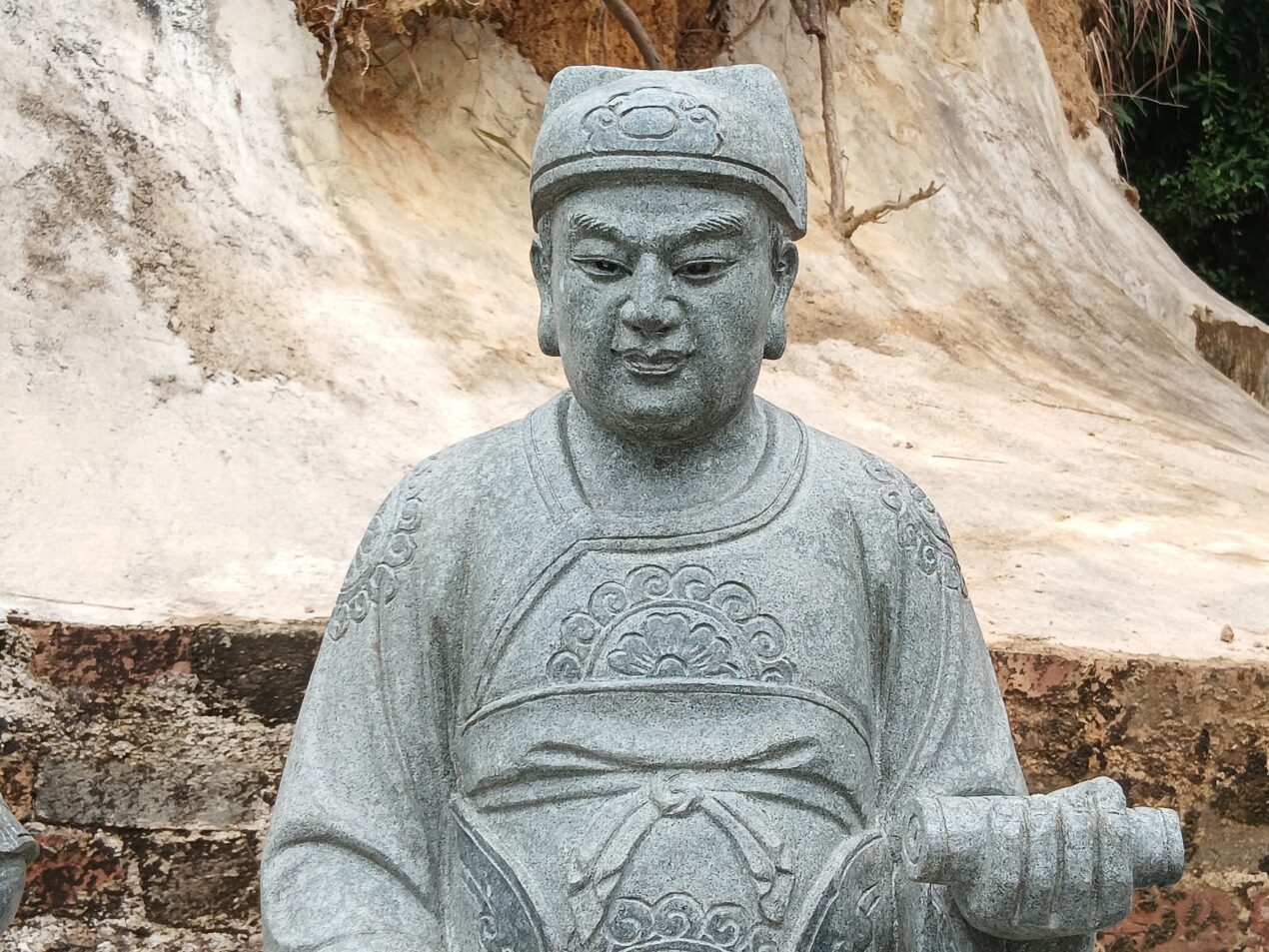12 Entrancing Reasons to Visit Hong Kong in 2025
An alarmingly frequent question I’m asked by friends back home is ‘Is Hong Kong worth visiting?’. My answer has always remained a resounding ‘Yes!’. As a quaint little fishing village turned global financial powerhouse and epicenter, Hong Kong set the gold standard of the ethos ‘East meets West’, and to this day, eats, sleeps, and breathes it to a T.
In my humble opinion, there’s no city like it on earth.
While COVID put a damper on inbound travel to Hong Kong, things have since recovered to an almost Herculean degree, with the city having welcomed roughly 45 million international visitor arrivals in 2024 alone. This still falls 15 million visitors short of its pre-pandemic days (2018/2019). However, the recapturing of what made Hong Kong so great is in the full swing of things. And I’m optimistic it will keep on keepin’ on.
Back alley open-air food stalls and night markets have regained their frenetic energy, SoHo and surrounding districts are swarming with tour groups, solo travelers, and everyone in between, and cultural landmarks and attractions like the Tian Tan Buddha, Star Ferry, and Victoria Peak have garnered an (almost) overwhelming audience of locals and tourists alike.
As a seven-plus-year resident of Hong Kong, there are more reasons to visit this city than I could feasibly fit into a single article. But you’re here because you want the cold hard facts, not a drawn-out, emotional rollercoaster of a telenovela in blog form.
Without further ado, from mouth-watering roast goose and BBQ pork (siu mei) haunts to stunning landscapes, beaches, and hiking trails, world-class public transportation, vibrant nightlife, and bustling Chinese festivals and other cultural events, here are 12 reasons why Hong Kong is worth visiting.
Pale Ale Travel Note: This article is here to celebrate all the positives of Hong Kong. I know there may be a handful of people reading that think it may be overly optimistic, naive, and negligent (in the omission of some of the harsh realities), however, these do not affect tourists/travelers to the city. Read my pros and cons of living in Hong Kong for a more balanced take.
It Epitomizes East Meets West to a T
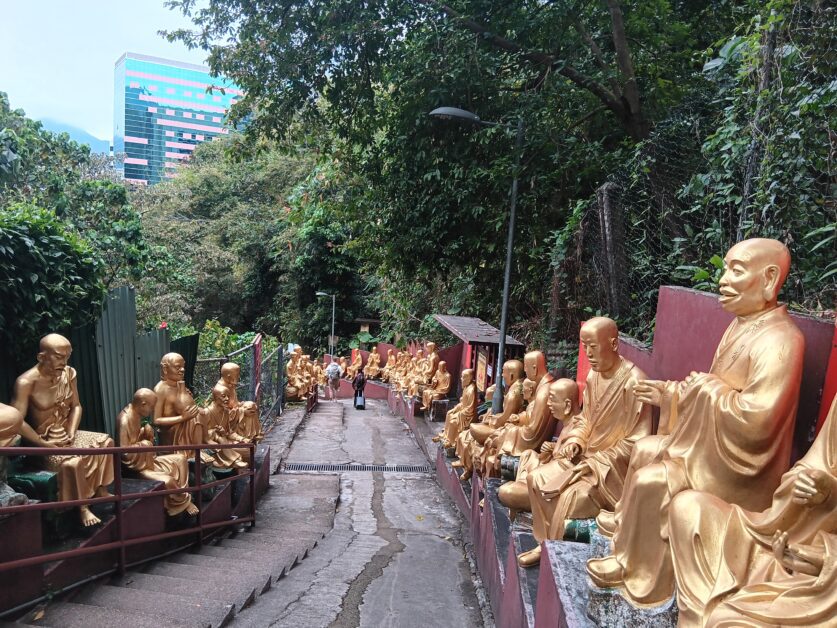
The Ten Thousand Buddhas Monastery in Shatin is a must-visit.
For better or worse (on both ends), Hong Kong’s historic identity and cultural heritage has been shaped by nearly 160 years of British colonial rule, Imperial Chinese origins, and a return to Chinese sovereignty. In simple terms, the city you see today is one of extreme contrasts, integrations, and everything in between.
Hong Kong is like San Francisco on steroids, the only other city I’ve found in my travels that embodies as congruous a melding of both Western and East Asian cultures. Others are too fragmented or primarily blend Western and South Asian cultures.
Historic temples and Buddhist shrines sit tucked between soaring skyscrapers, dim sum restaurants and open-air food stalls operate side-by-side with British and craft beer pubs, Michelin-star restaurants, and Korean BBQ haunts, century-old trams and ferries crisscross the city and its harbor in tandem with Italian sports cars and luxury yachts, and quaint fishing villages and Bohemian outlying islands exist just a hop, skip, and a jump away from world-renowned shopping centers and global financial institutions.
Esteemed traditional Chinese holidays like the Lunar New Year, Buddha’s Birthday, and the Qingming Festival (Tomb-Sweeping Day) go hand in hand with Western favorites like Christmas and Easter, fashioning an atmosphere and cityscape that reflects true cultural coalescence.
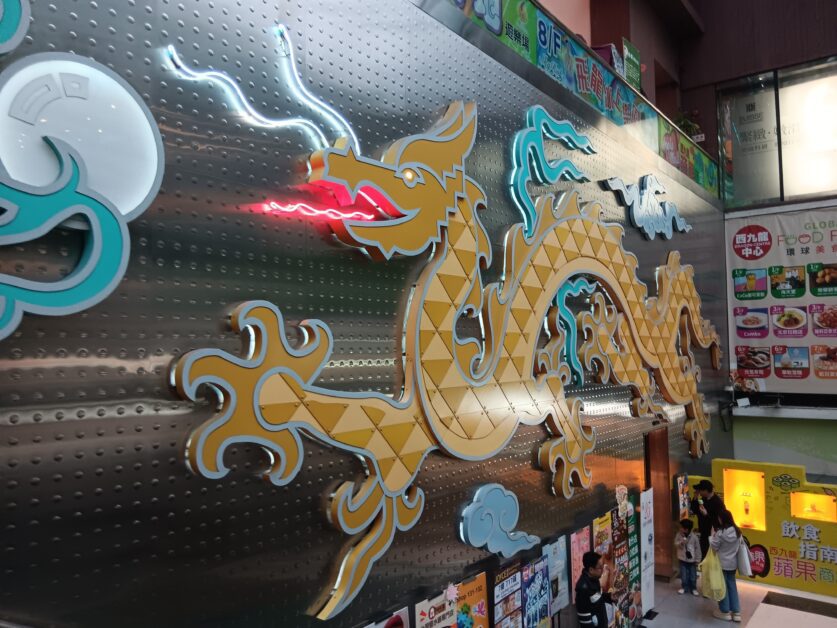
What says East meets West more than a packed shopping mall with an out-of-service top floor rollercoaster. Go check it out, it’s wild.
I’ve always told friends and family back home that you can have any type of day you want in Hong Kong.
For example, do you only want to eat at Lebanese restaurants or vegetarian restaurants while speaking English? You got it. Do you want to spend the whole day practicing your Cantonese while eating at Hong Kong-style diners (cha chaan teng) and Cantonese BBQ restaurants? I’ve attempted this. Maybe, you speak Mandarin or French and want to spend it with your fellow countrymen/countrywomen, eating spicy tofu and slugging bottles of Bordeaux until you drop. There are countless pockets of the city where this is all possible.
Of Hong Kong’s 7.5 million strong population, of which just under 10% of it is ethnically non-Chinese, there’s something for everyone. This ultimately makes it an incredibly accessible destination for international travelers seeking out an authentic cultural experience, minus most of the road bumps you might encounter in more ethnically homogenous cultures found in Asia.
Hong Kongers Are Extremely Efficient
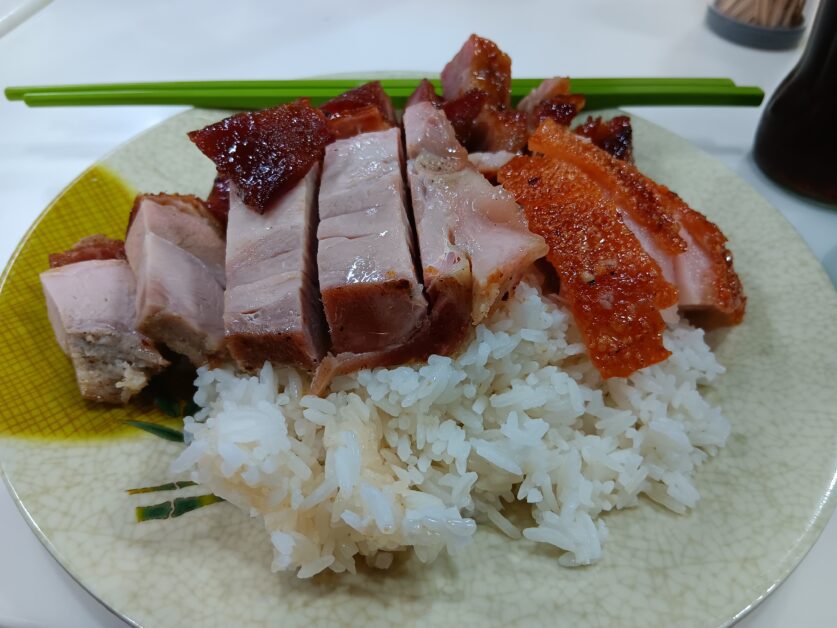
From order to being placed in front of me, it took under 2 minutes at Sun Kam Po Meat Restaurant in Shek Kip Mei/Sham Shui Po.
The most appropriate way I think you can describe Hong Kongers is that they are ‘kind but not nice’. So, if you’re expecting doting, effusive, overly genial greetings, reception, or service, you’re in for a rude awakening.
Actually, I take that back, it’s not rude at all. It’s just efficient.
I see too many posts on Google Maps and other online review platforms where travelers complain about how ‘rude’ Cantonese servers, shopkeepers, and other customer-facing staff are. It’s a city of nearly 8 million people where only 20% of the land is inhabitable, there’s a glaring lack of space, and the cornerstone of its professional identity has always been one of a financial epicenter, where ‘cash rules everything around me’.
There’s no time to stop and ask how your aunt’s cousin twice-removed is doing or how you’re feeling today. The power of the dollar is strong, so keep it moving.

One of many hectic, bustling, fast-paced pockets of the city: Central.
If this all seems off-putting to you as a traveler, think of it this way, everything is designed for lightning-fast convenience.
From one of the most comprehensive and punctual public transportation networks in the world, one that takes you from the airport to the city center in just 24 minutes, to restaurant proprietors and servers who operate with militant precision and speed, where dishes magically appear before your eyes just minutes after ordering, it’s easy to accomplish more than a handful of memorable things and experiences in a single day, unruffled by slow, painful service.
Hong Kong’s way of showing respect and being “nice” is by ensuring you are well-fed in a reasonable time, arrive where you need to be with no major delays and can accomplish as much as you want during your trip.
Would you rather have someone who frivolously engages in platitudinous exchanges and exaggerated niceties yet ultimately forgets to bring your coffee and/or takes an hour just to do so?
Plus, there’s a palpable energy that adds to the excitement of it all, especially when you begin to feel in lockstep with everyone after having become accustomed to the city’s pace.
Pale Ale Travel Note: The only thing both Hong Kongers and foreigners living here aren’t efficient at is walking. If you know, you know.
You’ll Never Go Hungry
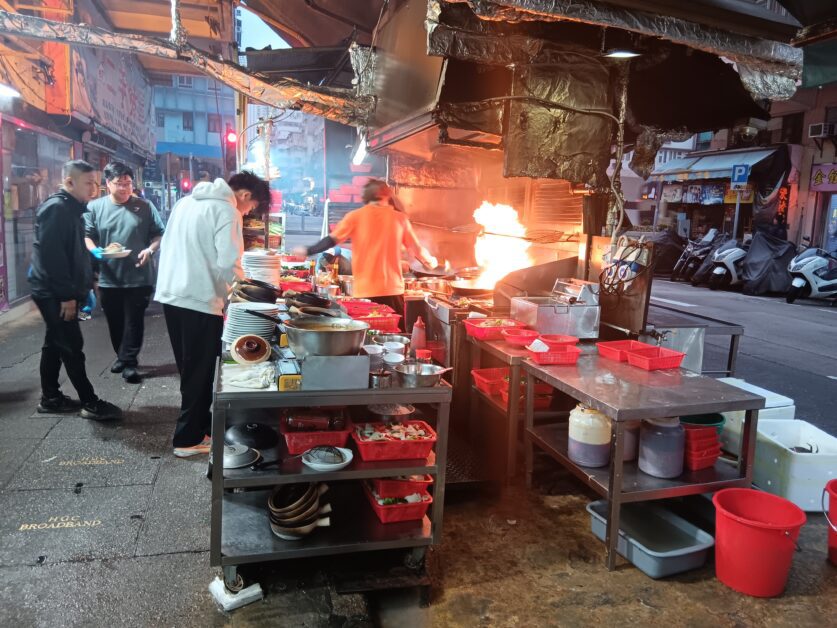
Oi Man Sang is a legendary dai pai dong in Sham Shui Po.
don’t doubt that if one of the people from that television show My 600lb-Life could fit on a plane, they would be in ‘feeder heaven’ upon landing in Hong Kong. The city itself is an eater’s paradise and undebatably why I still emphatically live up to the ‘Big’ in ‘Big Body’ (my moniker).
Picture nearly 100 Michelin-starred restaurants plating everything from foie gras with panna cotta, tuna, and French beans to Finnish lingonberries with pigeon, soul-warming Italian pasta and umami-driven bone marrow bites, smoky chicken-focused yakitori, and 18-ingredient Mexican mole.
Don’t forget one of the most affordable Michelin-star restaurants in the world, Yat Lok, a traditional Cantonese BBQ shop serving up savory roast goose and candied BBQ pork over noodles and rice.
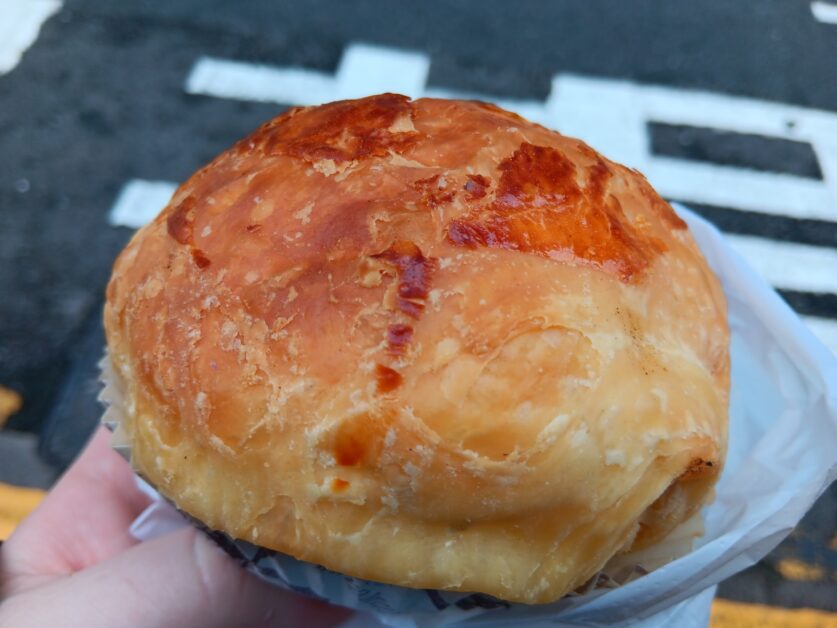
A jam-stuffed pineapple bun at Jimmy’s Cake Shop in Shek Kip Mei.
But what if you don’t want to toss on a blazer or cocktail dress for a night of fine dining and breathing (shoutout to SpongeBob)?
Cantonese institutions like Hong Kong-style diners (cha chaan teng), open-air food stalls (dai pai dong), dim sum tea houses, roadside bakeries, boardwalk seafood shacks, siu mei and wonton noodle shops, and the pandemic-driven two-dish rice (aka ‘This This Rice’) takeaways all fuel affordable, hearty, and authentic eating options. Street food night markets and cooked food centers also round out the Cantonese dining front.
And what if I told you that one of the best kebabs I’ve ever eaten was in Hong Kong? Western and international cuisine options at the ‘everyday’ level are plentiful, with everything from (grassroots) juicy burger restaurants to Japanese izakayas, Lebanese canteens, and North/South Indian vegetarian havens in profusion.
Pale Ale Travel Tip: If you’re hungry reading this, make sure to check out my posts breaking down the best siu mei restaurants in Hong Kong, the best free-flow brunches in Hong Kong, and the beefiest burgers in Hong Kong.
It’s a Hiking Mecca
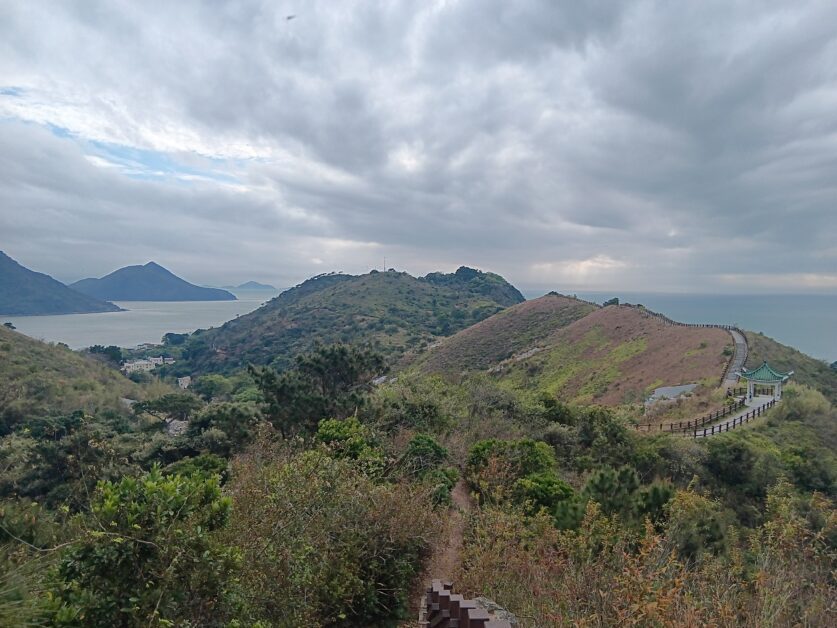
Fu Shan Viewing Point is the go-to hike in Tai O, especially at sunset.
Who would have guessed that a city with one of the largest, most iconic skylines in the world would also have incredible hikes and nature trails?
While yes, Hong Kong is considered a ‘dense urban jungle’ with its 9,000-plus high-rise buildings (4,000 of which are considered skyscrapers), many people don’t know that roughly 80% of its land is uninhabitable land, making it ripe for outdoor activities like hiking and trail walks.
It’s funny, now that I’m in my mid-thirties, I’ve seen a noticeable shift in what friends and other people my age prefer to do on the weekends. Hint: it’s not drinking. Hong Kong is an extremely active city and why wouldn’t it be when you can step into your backyard and hike a mountain?
With just under 600 named peaks in Hong Kong, its highest (and one of my favorite hikes) being Tai Mo Shan at 957 meters (3,140 feet) along with 10 peaks over 700 meters, nearly every corner of the city offers accessible hikes for mountaineers of all skill levels – including the incredibly popular (and quick) 45-minute jaunt up Victoria Peak and world-renowned ultramarathon route (which spans four hiking trails) across inhospitable, mountainous terrain.
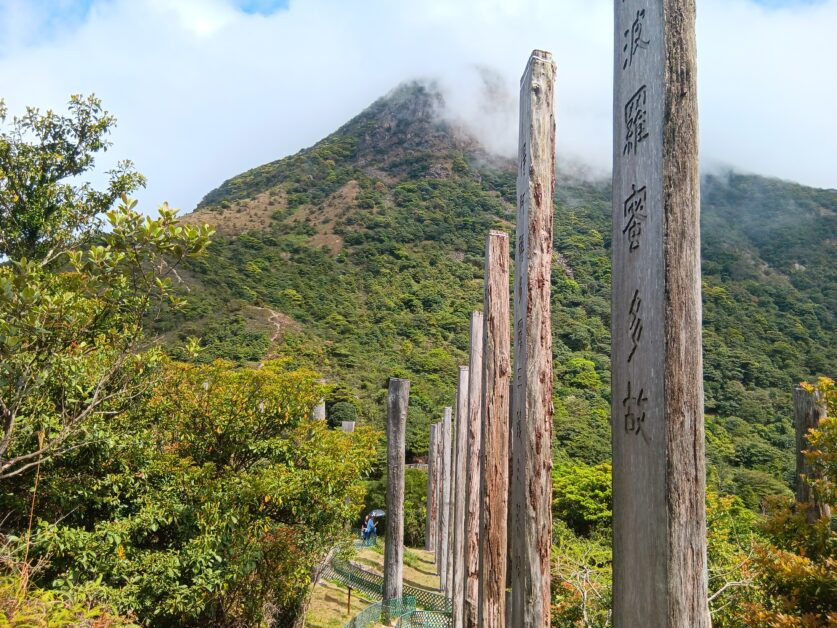
The Wisdom Path is a nice little stroll when visiting the Big Buddha. If you’re a serious hiker, you can tackle it on your ascent and/or descent of Lantau Peak (pictured above).
Note: Watch the documentary ‘Four Trails’ if you want a peek into the most intense ultramarathon race in Hong Kong (and one of the hardest in the world).
In what other global metropolis can you enjoy panoramic views of the city, its harbor, and surrounding islands in just 45 minutes from the central business district?
Pale Ale Travel Tip: For a complete list of hikes in the city, make sure to check out my post breaking down the best hikes in Hong Kong, as well as the websites Hong Kong Hike and Drone & SLR – two sites that dive into great detail about each hike and frankly, put my hiking posts to shame!.
Transportation is Off the Charts Convenient

Green minibuses are a very local way to explore the city. They operate like regular double-decker buses with scheduled routes, just faster.
As an absolutely badass city chock-full of activities, sights, and attractions to do and see, it wouldn’t be possible to do a trip to Hong Kong justice without efficiently getting around via one of the most comprehensive (and punctual) public (and private) transportation networks in the world.
It all starts with the second you land at Hong Kong International Airport. Here, you can pick up your key to the city, aka the Octopus card, a smart-value electronic payment card that allows you to seamlessly pay for transport and other goods, before taking the 24-minute Airport Express (metro line) directly into the city center.
From there, choose from any means of transport spanning roughly 180 MTR stations (including light rail and heavy rail), 700 bus routes, just under 400 minibus routes, 10 ferry operators, and a fleet of 165 tramcars. Hong Kong has set the gold standard for commuting and travel.
Simply put, because of this expansive network of public transportation options and routes, there isn’t any corner of Hong Kong that you can’t get to in under an hour.
You name it, you can probably ride it. Get your mind out of the gutter. Further, unlike your dirty, dirty mind, Hong Kong’s MTR, bus lines, ferries, and trams are all kept spotlessly clean, making commuting and traveling across the city less painful than it typically is elsewhere in the world.
Pale Ale Travel Tip: The Octopus card is going to be your best friend when visiting Hong Kong. It’s a rechargeable smart-value card for electronic payments and is used by 99% of people in the city. It’s most commonly used to pay for transportation (by swiping in). Make sure to read more about it in my post ‘Using the Octopus Card in Hong Kong’ along with ‘How to Get Around Hong Kong’ and you’ll be a pro before you even step foot here.
Meat-Free Eats For Days: It’s Vegetarian & Vegan Friendly
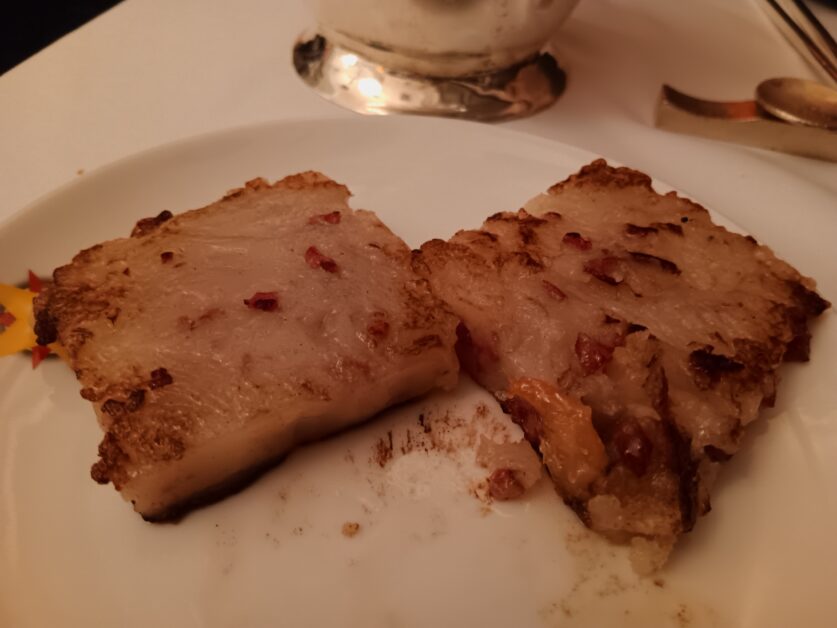
Grilled turnip cakes are one of my all-time favorite dim sum dishes.
This one deserves a section all of its own as vegetarian and vegan-friendly cuisine and foods are widespread in Hong Kong. While it’s not quite “India levels” of being vegetarian and vegan friendly, Hong Kong’s large Indian and South Asian populations make such snacks, cuisines, and foods incredibly accessible.
As of 2016, there were an estimated 229 vegetarian and vegan restaurants in Hong Kong, nearly 100 more than the previous year. To say that estimate is a lowball number would be an understatement.
And, if I’m completely wrong about that, the number of vegetarian and vegan restaurants has significantly grown since 2016. In my seven-plus years living in Hong Kong, the only times I don’t see vegetarian or vegan options on a menu is when I explicitly go to a meat specialty restaurant (like a Parisian-style steakhouse). Even the two-dish rice spots mentioned above cater to vegetarians and vegans.
Don’t believe me? Check out this Reddit thread.
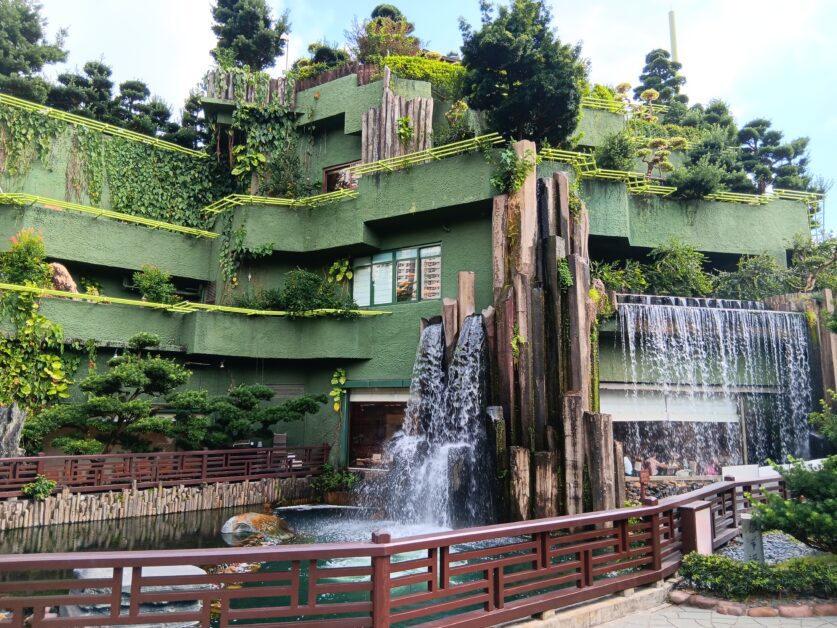
Chi Lin Vegetarian is set behind these little waterfalls in Nan Lian Garden.
This might surprise you since my nickname is Big Body and I’m sure you have some conclusions about what my diet primarily consists of (you wouldn’t be wrong) but because Hong Kong is so vegetarian and vegan friendly, I actually work in no-meat days to my routine roughly 3 to 4 days per week. I don’t do it just because it’s good for my health but because it’s goddamn delicious and also allows me to go ham (literally) on ham on the weekend.
My top restaurants include Sangeetha for both North and South Indian cuisine, Treehouse for modern Western plant-based bowls, burgers, and wraps, and Chi Lin Vegetarian for a mix of classic and contemporary vegetarian Chinese dishes (ex. Spring rolls, braised eggplant, and stir-fried noodles).
It Has (Surprisingly) Incredible Beaches
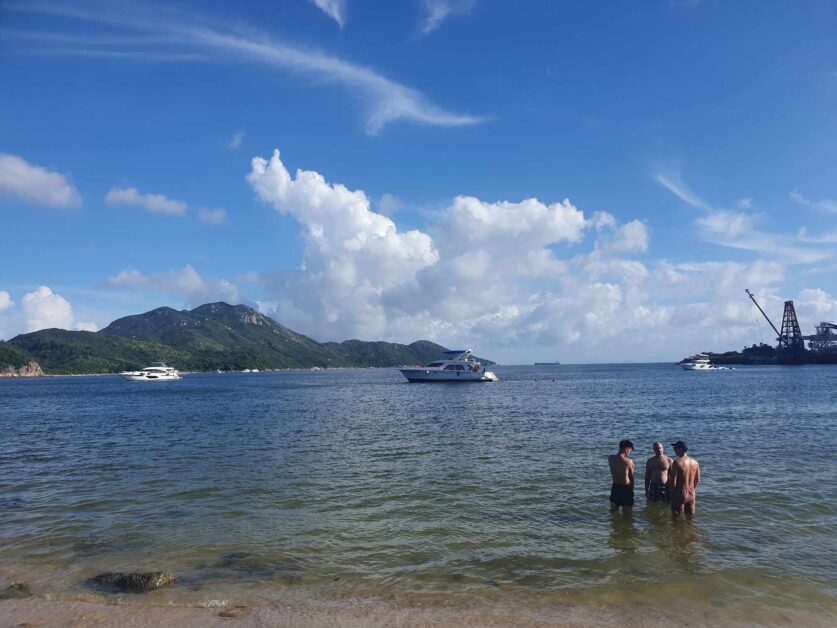
Lamma Power Station Beach is another spot you can find me during the summer!
Before moving to Hong Kong, never in my wildest dreams did I imagine that it would have some of the best beaches I’ve ever been to. It’s often Hong Kong’s towering skyscrapers and iconic skyline, Instagram-worthy dim sum and Cantonese restaurants, century-old transportation modes like the Star Ferry and ‘Ding Ding’ (tram), and jaw-dropping attractions like the Tian Tan Buddha and Nan Lian Garden that dominate tourism ads.
However, Hong Kong’s beaches aren’t to be slept on at all.
Are they Maldives or El Nido quality? No. But you can’t access either of those areas without quite a trek. And my one Spanish buddy almost died in El Nido after some bad squid adobo and not a single person to help him through it except a local shaman (I’m not even making that up).
What if I told you that some of Hong Kong’s best and most pristine beaches can be accessed in under 45 minutes from the Central Business District? There are nearly 100 of them, split evenly down the middle between gazetted and non-gazetted beaches, gazetted being managed by the Leisure and Cultural Services Department, and non-gazetted beaches having no official oversight and facilities, typically more remote and difficult to access.
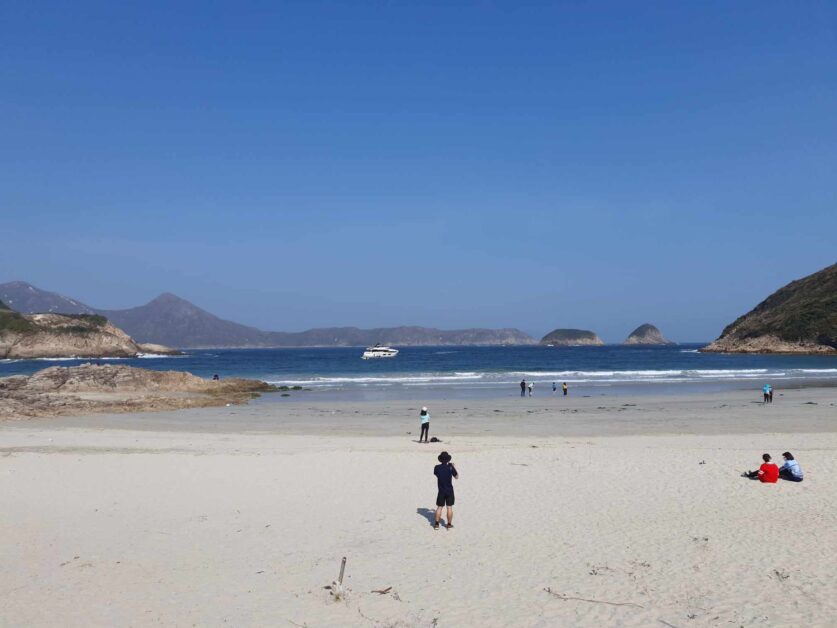
Ham Tin is a more remote, non-gazetted beach which is worth the trek.
You’ll find exquisite stretches of remote beaches with white, black, and golden sand with crystal clear waters, popular ‘more touristy’ beaches for watersport activities and lounging, big wave coves for surfing, untouched coral reef and inlets for snorkeling and scuba diving, and camping-friendly beach sites.
Most beaches will also have small restaurants, shops, and snack stalls, meaning you can easily spend an entire day on the water in Hong Kong.
My favorite beaches are:
And, I do have to give a shoutout to Repulse Bay Beach as one of the best spots to post up on the water with an Aperol Spritz and some chips and guac, especially after hiking Violet Hill, The Twins, or both.
Pale Ale Travel Tip: One of the only major drawbacks of visiting Hong Kong is that accommodation can be expensive. You can read more about it in my comprehensive guide, ‘Is Hong Kong Expensive?’. Further, I’ve written a post on the top affordable hotels in Hong Kong to help mitigate some of this stress when visiting.
The Outlying Islands Are Stunning
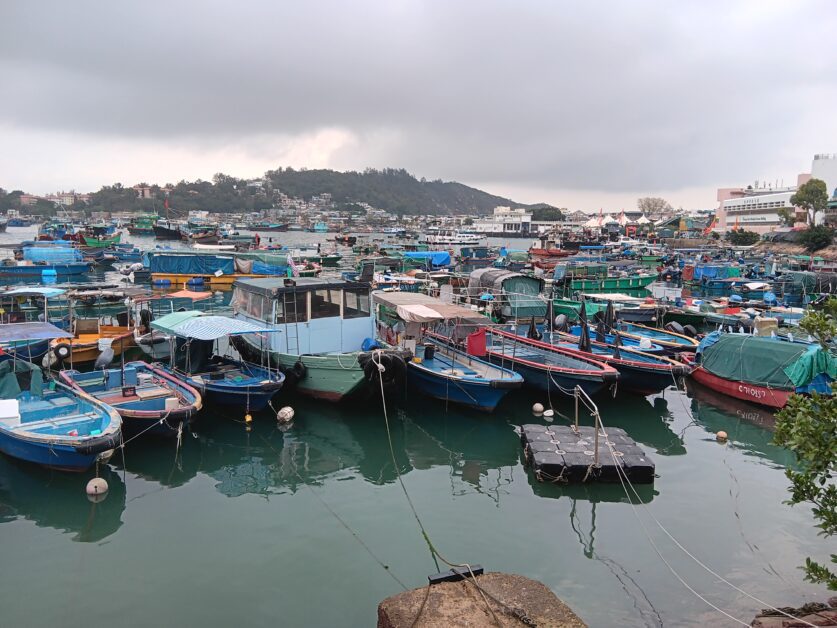
As the Outlying Islands primarily are fishing villages, you’ll see a lot of boats like this.
In addition to more beaches than you can shake a stick at, Hong Kong is home to over 230 outlying islands and islets, with several of the larger ones like Lamma Island, Cheung Chau, Peng Chau, and Po Toi being popular day-trip tourist destinations.
Day trips to Hong Kong’s Outlying Islands are a must in the summertime when you can explore these quaint traditional fishing villages, swim and snorkel in their pristine beaches, eat freshly caught and prepared seafood, explore local artisanal shops and island rock formations, and get an inside look into how a less represented population of the city lives.
In my humble opinion, day trips to Outlying Islands are a far underrepresented activity on most travelers’ Hong Kong itineraries, so if you have several days and want to do something different and get out of the hustle and bustle of Hong Kong Island, hop a ferry and make a day of it!
It’s Majorly Safe
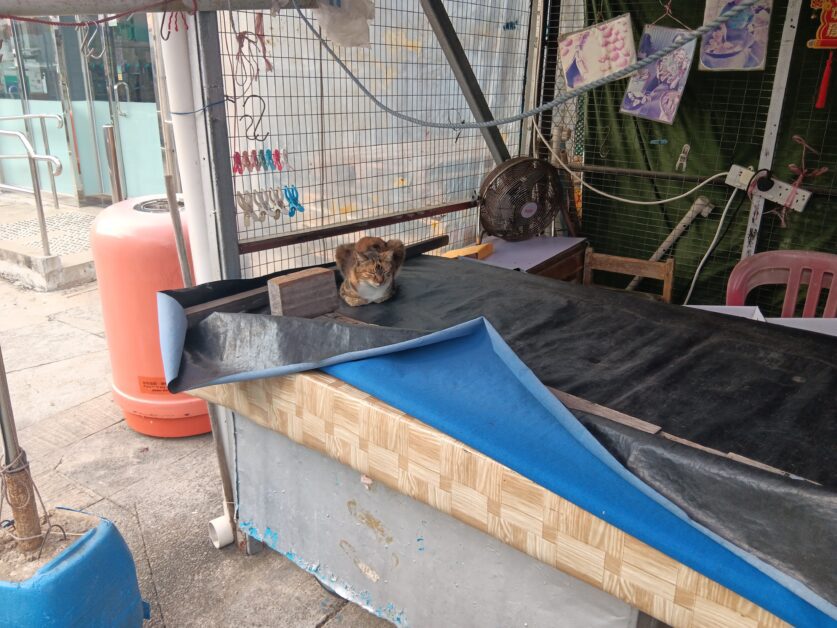
Paw patrol: Cats are the main stars of/loved by most Hong Kong fishing villages as they protect the seafood from rats and other critters.
While more than a handful of famous films, television shows, and video games might have you thinking that Hong Kong triads are on every corner, ready to extort and/or chop you down with a machete, while addicts get the fix in opulent opium dens with courtesans by their sides, that couldn’t be farther from the truth.
I’ll say it. It doesn’t matter what time of the day it is, there isn’t a single neighborhood or area in Hong Kong that is unsafe to walk around, even by yourself. Hong Kong has one of the lowest violent crime rates for a city of its size (nearly 8 million).
This already low number has precipitously declined since the early 1990s when gang activity and drugs were more rampant in certain areas.
Solo female travelers have consistently compared Hong Kong to the likes of Tokyo and Singapore in terms of safety. Statistics don’t lie either, with the 2025 Numbeo Crime Index ranking Hong Kong in the top 15 safest cities, just several spots off from its neighbor Taiwan and Abu Dhabi (in first place).
Both violent and petty crimes are infinitesimally low. Your biggest risk? Pedestrian-related traffic accidents and dehydration.
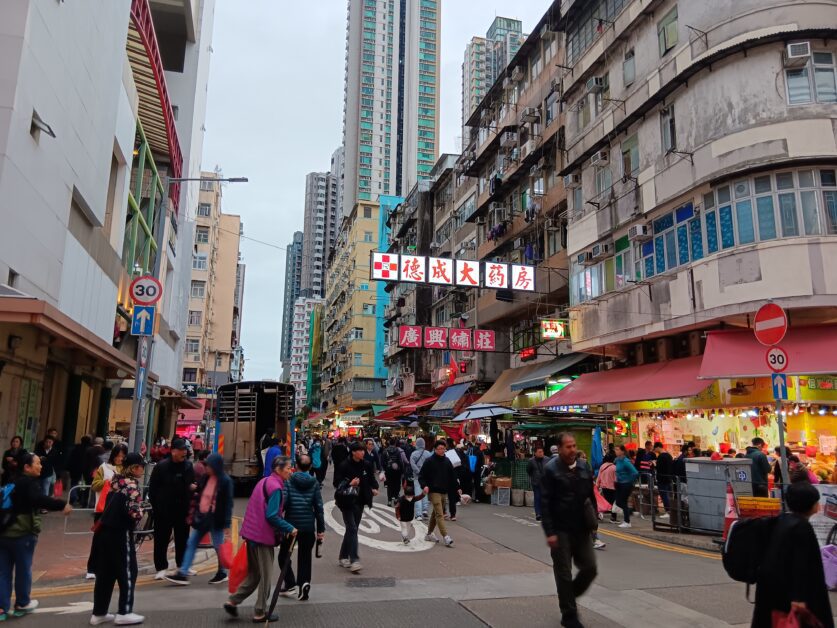
Sham Shui Po is one of the most dangerous spots for pedestrian-related car accidents due to its countless narrow streets and open-air markets.
Specifically, vehicles carve the streets, back alleys, and narrow roads of Hong Kong with reckless abandon, the most dangerous areas being Wan Chai and Sham Shui Po.
For example, between 2015 to 2019, there were an estimated 16,000-plus pedestrians listed as casualties (ex. Injured or worse) as a result of a vehicle accident in Hong Kong. It’s even more alarming that nearly 4,000 of them were killed or seriously injured.
Keep in mind that roughly 70% of all collisions and accidents with pedestrians occur on secondary roads and intersections, so I recommend remaining extra vigilant in those situations!
Further, the only time I’ve actually felt unsafe in Hong Kong was during a summer hike that exceeded 38°C (100.4°F) on a completely uncovered trail. So, please be careful hiking or engaging in strenuous activities outside in the summer.
Finally, Hong Kong is considered LGBTQ+ friendly and even classified by the International LGBTQ+ Travel Association (IGLTA) as “reasonably LGBTQ+ friendly, with a growing and politically engaged community.
There’s Festivals & Cultural Events Galore
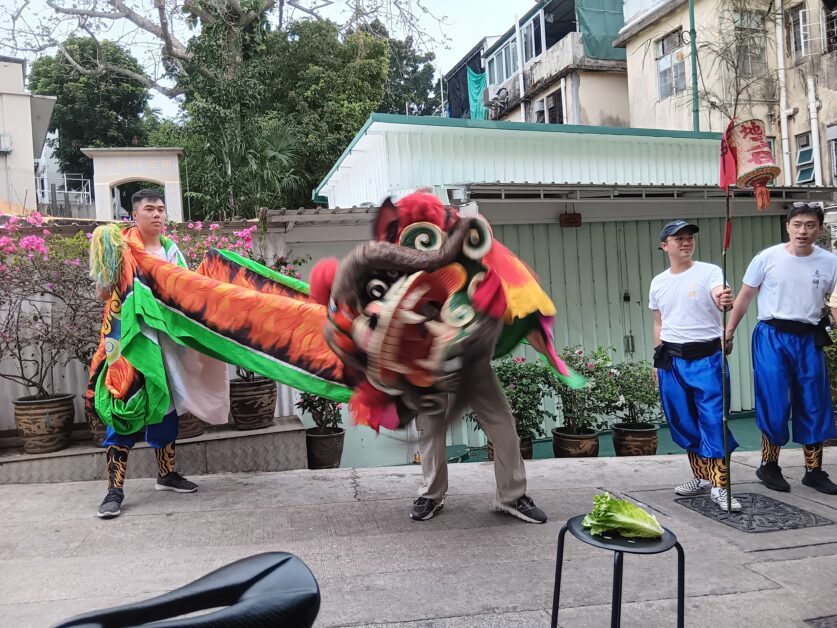
Lion and dragon dances are common during Chinese festivals and holidays.
As the epicenter of East meets West, Hong Kong enjoys a yearly calendar that’s packed with cultural events, festivals, exhibitions, and performances.
Traditional Chinese holidays and events like Chinese New Year follow the lunar calendar, with varying dates depending on the year. Other events, holidays, and festivals, like Christmas (primarily Western), follow the Gregorian calendar and have fixed dates.
The biggest and most momentous annual traditional festivals in Hong Kong are the Lunar New Year (aka Chinese New Year), the Mid-Autumn Festival, and the Dragon Boat Festival. Other popular festivals and holidays include the Qingming Festival (Tomb-Sweeping Day), Buddha’s Birthday, and National Day (an ode to the PRC).
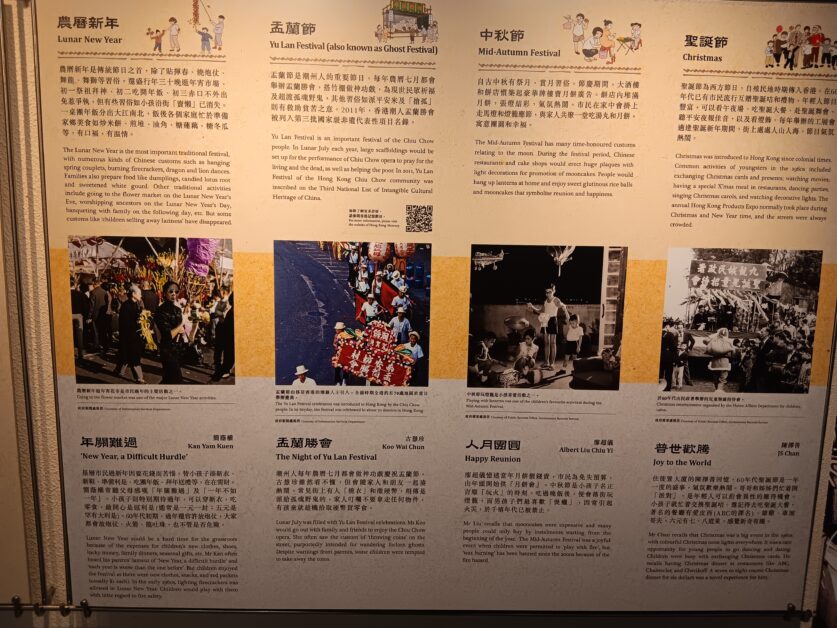
Some of the most popular holidays in Hong Kong, as explained at the Mei Ho House Museum.
Quirky and unique festivals like the Cheung Chau Bun Festival, where competitors race up bamboo poles to “snatch” buns affixed to the tree, and the Hungry Ghost Festival, a day of offerings to spirits and ancestors, ensure the calendar is fully packed.
If cultural festivals and traditional events aren’t up your alley, take your pick from the likes of the raucous, boozy Hong Kong Sevens, weekly horse races at the Happy Valley (and Shatin) Racecourse, countless art exhibitions and fairs, annual electronic and international music festivals, and unadulterated craft beer and whiskey festivals.
Oh, and I can’t forget the celebrated New Year’s Eve fireworks.
Pale Ale Travel Tip: Hong Kong’s biggest festival and cultural holiday is Chinese New Year, which generally takes place between the end of January and mid-February (depending on the year). Make sure to read my post ‘Visiting Hong Kong in February’ for a complete breakdown of what you can expect when visiting the city during this special time and how to plan accordingly.
The Views Are Just Insane

Tell me these views don’t get you absolutely jazzed up. I dare you.
At night, views of the illuminated, towering skyscrapers, Victoria Harbour, and surrounding mountains and cityscape will have you feeling like you’re in your very own cyberpunk version of Ghost in a Shell or Blade Runner.
It’s understandable with the former (Ghost in a Shell), as the city’s stunning backdrop and transition years from Colonial to Chinese rule provided significant inspiration for this Japanese anime franchise.
But it’s not just Hong Kong’s imposing skyline that generates jaw-dropping views.

Poho wall art is always changing and a great way to explore this small neighborhood.
A technicolor basketball court directly in front of a housing estate painted in more colors available on Bob Ross’s palette, coastal views of a UNESCO-listed geopark consisting of tuff volcanic rocks and sub-vertical jointed columns, island and beach sunsets that transport you to a state of bliss, golden pagodas with bright orange bridges set over a lilypad clad pond, quirky wall art and graffiti set in the back alleys of Bohemian neighborhood, a 34-meter behemoth of the Buddha with verdant rolling hills and one of the city’s highest (most brutal) peaks in the periphery.
That doesn’t even scratch the surface.
Don’t even get me started on the 10,000-plus golden statues of various Buddhas in an assortment of poses lining the steps to a Monastery overlooking the mountains. Or, the Wonka-esque views from the Hopewell Centre glass elevator in Wan Chai overlooking the city.
It’s Considered a Visa-Free Friendly Destination
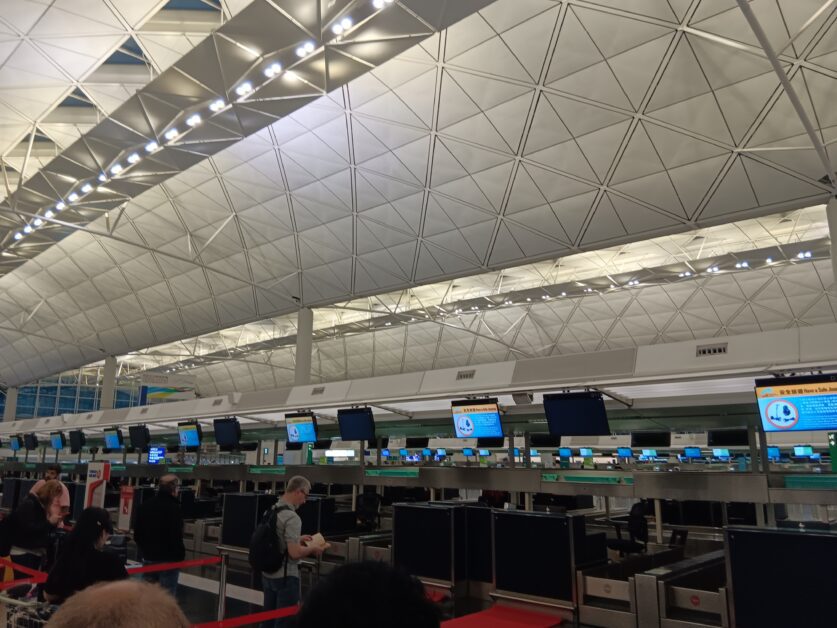
I know this is check-in at HKIA but it’s one of the only airport pictures I have.
Nationals of roughly 170 countries and territories may travel to Hong Kong visa-free for a period of anywhere from 7 to 180 days, making it incredibly ‘visa friendly’ and a far departure from the visa policy enforced in Mainland China.
Simply show up at the airport and receive a visa on arrival. This means that transit visas are not required either for any of these 170 countries.
Western countries like the U.S., Canada, the UK, Australia, and most of Europe enjoy the longer end of the above timeframe, with 90 days on arrival typically being the norm,
You can find the complete list of countries that enjoy visa-free travel at this government link.
Pale Ale Travel Tip: If you need any more Hong Kong inspiration to get you moving on booking that trip, make sure to check out my posts: (1) ‘30+ Fun Facts About Hong Kong’, and (2) ‘When is the Best Time to Visit Hong Kong?’.
Is Hong Kong Worth Visiting?
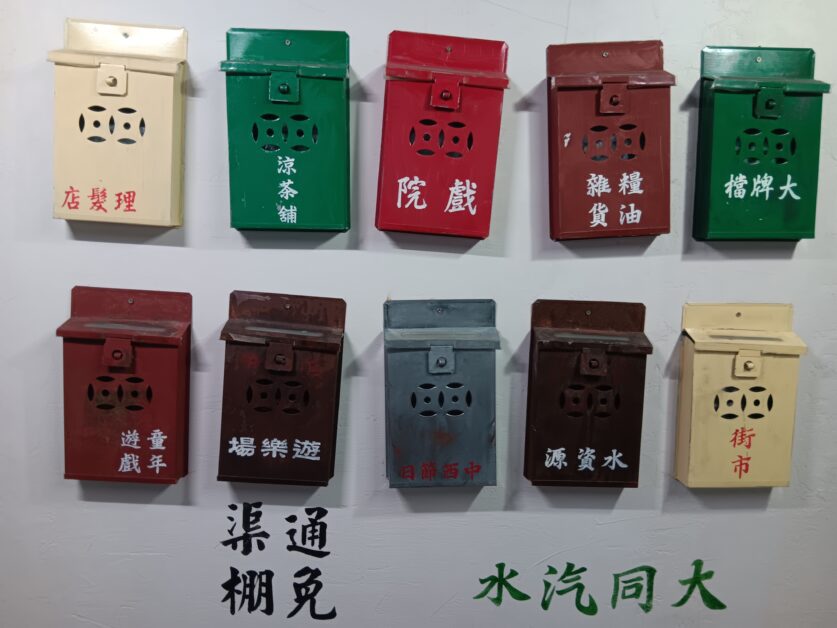
The Mei Ho House in Shek Kip Mei provides a great primer and look into Hong Kong’s early housing policies and low-income living.
I can’t even imagine the excitement I’d feel to have a trip planned to Hong Kong for the first time. The sights, the smells, the in-your-face energy, it’s addicting. Hong Kong is absolutely a destination that is worth visiting as writing the book on ‘East meets West’ history and heritage makes it incomparable to anywhere else in the world.
All of the above are just a small part of why I’ve chosen to stay in Hong Kong for over seven years now. I keep finding new reasons each day as to why it’s one of the best cities on earth.
I know you’ll at least find a handful of the reasons above ring true and more than likely find some of your own reasons along the way.
If you have any questions about visiting Hong Kong, such as how to organize your trip, where to eat and drink, and what you need to see/do, please don’t hesitate to reach out at info@palealetravel.com.
Finally, I provide customized Hong Kong itineraries for travelers of all budgets, so if this is something you are interested in, reach out to inquire about pricing!
Travel well everyone,
Big Body
Big Body is a voracious lov…eater, a cowardly fighter, and a self-proclaimed curry goat BBQ-eating champion (don’t forget the donkey milk) who likes Stoicism, baseball, and writing in the third person. Having worked for himself for the last 7 years, he isn’t particularly successful but he does still drink ice-cold Sapporo draft beers with the best of them and knows his way around a Dai Pai Dong or two. He is based in Hong Kong but you can still find him in Saigon, Osaka, and Vienna for extended periods.
